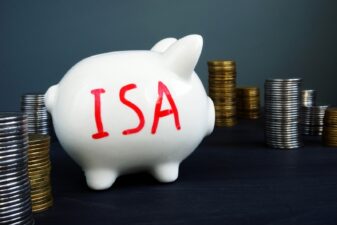In the past, I’ve tended to think of a stock market crash as a time to buy for big share price recoveries rather than for dividends. I mean, we get the biggest share price gains when they’re picking up from low levels, right?
As for FTSE 100 dividends, they’re there all the time. It doesn’t really matter much whether the market is in a bullish phase or a bearish phase. If I can find a dividend offering a nice yield and backed by a progressive policy, I’m sorted, aren’t I?
Well, the more my interests turn to income rather than growth, the more I see falling markets as a great time to seek the best long-term dividends. And I reckon we can sometimes secure a tasty future income stream even by buying when a stock’s dividend has been cut or suspended.
The thing is, a dividend yield of, say, 4% might be very attractive. It’s even better if it’s strongly covered by earnings. And the icing on the cake is if the company has a policy of raising its annual dividend ahead of inflation.
Double our money
But if 4% is good, 6% is even better. And the difference the extra 2% can make can be quite remarkable. For example, a lump sum of £10,000 invested today at a 4% annual return will grow to approximately £42,700 in 37 years. Why did I choose 37 years? Because, with a 6% return instead, that’s the time it will take to achieve double the result.
Yes, just an extra 2% per year would turn that £42,700 into £86,400.
What about regular investing? With no lump sum, investing £500 per month for the same 37 years at 4% will generate a fraction over £500,000. But at 6%, we get within a whisker of £790,000. Now, I know I don’t have 37 years of investment left ahead of me, but it does drive home the power of even a small increase in annual returns.
What has this all got to do with investing during a stock market crash? Well, if we buy dividend shares when the price has crashed, we can lock in higher effective annual returns — at least on any initial lump sum. And the extra yield on that cash will be there year after year.
What dividend?
Let’s look at Lloyds Banking Group, for example. It might seem weird to think about buying a dividend stock at a time when the dividend has been slashed. But the big cut was only temporary, and Lloyds has already spoken of its progressive and sustainable dividend policy.
Now, we can’t be sure what level it will get back to. But let’s work on 3p per share, which was around the level before the crash. If that level comes back, investors who bought just before the pandemic would see a yield of approximately 5%. But those buying today will bag an effective yield of around 6.7%.
And anyone who managed to buy at the lowest Lloyds share price of the past 52 weeks would pocket… wait for it… a massive 12.5%. How does investing 10 grand at a 12.5% return compare with a 5% return? Well, there would be more than 10 times as much in the pot after 37 years.
Of course, there’s no guarantee of future dividends. And I’m not for a moment making an actual prediction for Lloyds. I just think it’s an interesting illustration of the potential.
How I choose
It’s all very well thinking it’s good to buy dividend stocks while they’re cheap. But which are the best for the long run? After all, who knows which companies are going to hit trouble next year and slash their annual payments? I’ll start with a couple of the kinds of dividend payers I try to avoid. For one thing, I steer clear of dividends that are poorly covered by earnings.
I’ve kept well away from Vodafone for years. That’s despite watching some pretty impressive payments, and it was tough turning my nose up at yields of 6%–7%. The trouble is, Vodafone had a weird habit for years of paying dividends well in excess of its earnings. That’s especially mystifying for me from a company with huge debts. Why would a company do that?
By not buying Vodafone, I’ve missed out on some good income. And yes, companies will often keep paying when cover is thin or even non-existent. But that option is just not safe enough for me.
Cyclical dividends
I’m always wary of companies in cyclical businesses, though I don’t set hard and fast rules for my investment portfolio. For example, I’ve kept away from miners like Rio Tinto. For the past few years, Rio has been paying good dividends. But commodities prices can sway hugely from year to year. And the next time metal and mineral prices slump, I’d expect the Rio dividend to take a hit.
I do still think the sector can be good for those with a very long time horizon. I just like to see cash coming in reasonably regularly for me to reinvest.
In contrast, I like housebuilders like Taylor Wimpey and Persimmon. Yes, they can be cyclical. But house prices just don’t soar and crash the way copper, tin, and all those metals can. And I reckon the UK’s chronic housing shortage will help keep me in dividends for years to come.
Out of favour
Another approach I like is to look for companies that are out of favour, but that are generating lots of cash. Imperial Brands is an obvious candidate, with investors shunning tobacco companies. But right now, Imperial is on a forecast yield of 8.5%, covered 1.7 times by earnings. Will Imperial be able to keep its tobacco products evolving to cope with future falls in actual smoking? I’d buy, if I didn’t have ethical qualms.
Forecasts suggest the Footsie will bump its total dividend payments by around 25% this year. And dividend cover is improving too, after a few years of weakness. On the whole, I reckon this is a great time for me to invest in FTSE 100 dividend stocks.







